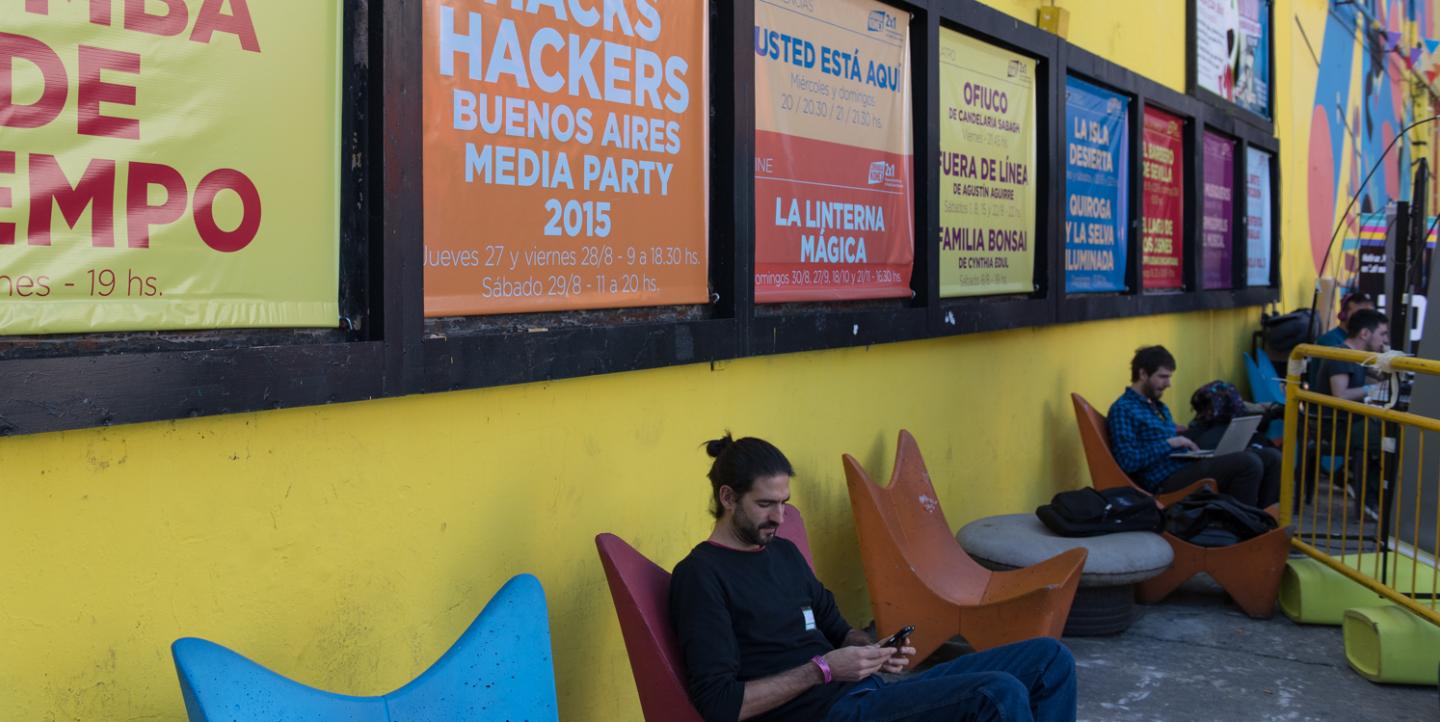Every year since 2012, the Media Party, organized by ICFJ Knight Fellow Mariano Blejman and Hacks/Hackers-Buenos Aires, showcased the latest digital and data-driven technologies.
The 2015 Media Party did not disappoint.
ICFJ's staff scouted the event, attended by over 1600 media professionals and enthusiasts, and rounded up these exciting digital tools, some of which are already available and some that should be in newsrooms and users' toolkits in the coming months.
What we especially liked about these tools is that they are all open source, letting journalists take advantage of these tools without much coding knowledge.
Vox Media’s Autotune
You see an awesome data graphic online, and you think, “Sweet, I’ll just copy the code and swap in my data.” Sounds straightforward, right? Not so, says Kavya Sukumar, a Knight-Mozilla Fellow at Vox Media. Many newsrooms usually work with developers to build these graphics for a specific purpose, without considering the reusability of the project.
Vox Media, which runs sites like Vox.com, SB Nation and The Verge, took a different approach with Autotune, launched in July 2015. Autotune is a web interface that houses blueprints for certain content types like quizzes, charts, sliders and more.
Journalists across all of Vox’s outlets – and other journalists as well – can use these replicable templates to add any of these content types to their own stories without starting a coding project from scratch.
As Sukumar and her colleague Ryan Mark explain in this Vox Product article, the goal is to “have a very well-defined path to take a project from a simple one-off production to a reusable project blueprint.”
Twine
Twine is a tool for creating interactive stories that let the reader dictate the narrative path. So think “choose your own adventure” in news game form.
At the Media Party, Linda Sandvik, Knight Mozilla Fellow at the Guardian, guided users through the setup process and helped them develop their own news games, which feature prompts that require readers to participate directly in advancing the story.
A tool like Twine could be especially useful for presenting choices that confront individuals in difficult circumstances, like how to create a budget on limited resources or making a perilous journey across continents. Readers could gain a new first-hand perspective in the stories they read.
Sourcefabric’s Superdesk
The full transition to digital publishing can be a multistep process - finding and creating the content, producing it and distribution is just the bare minimum, and all require different teams and platforms.
The Sourcefabric team, which creates open source tools for journalists, hopes to clean all that up with Superdesk, a fully customizable workflow management tool that will let editors and digital journalists create content, collaborate across teams, dip into coding libraries, find channels for news delivery and more all on one publication system.
Users will be able to work from a single interface instead of logging into multiple sites. Sourcefabric hopes to roll out Superdesk in 2016, but in the meantime, check out some of the planned features, or even request your own here.
Mapa de Medios Argentina
Co-created by ICFJ Knight Fellow Miguel Paz, Mapa de Medios builds on Paz’s work to increase transparency in Latin America through Poderopedia, which tracks relationships between powerful figures.
This time, his work looks closely at Argentina’s media outlets. Similar to “media maps” launched today in Colombia and Chile, Mapa de Medios Argentina will create a comprehensive database of media organizations to show what content they produce, how they are regulated and what persons of influence are connected to their work.
Paz worked on this project during a Media Party hackathon, which gave participants a chance to pitch and execute new projects, drawing on concepts from the first two days of the event. This year’s edition presented almost 30 new projects. Check out this Hackdash page to see all the 2015 Media Party Hackathon projects.
Main image taken by Jefferson Mok at Media Party 2015

